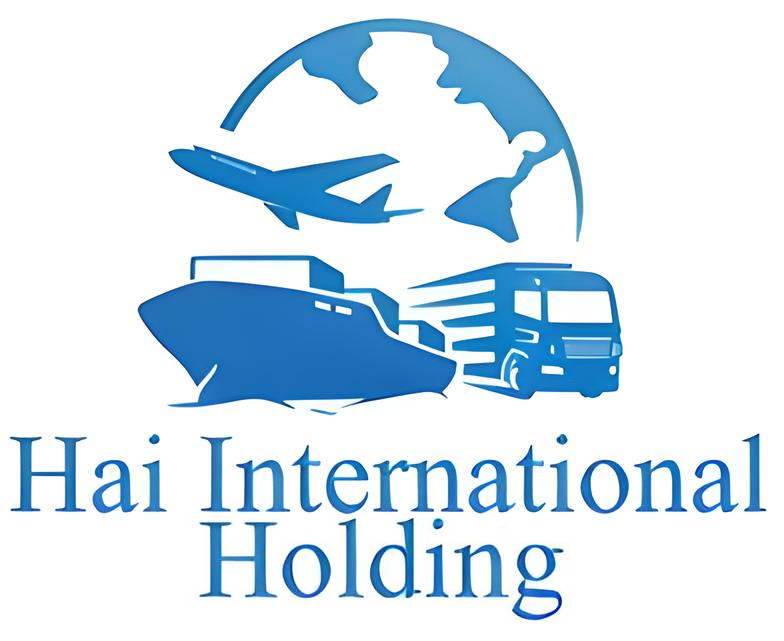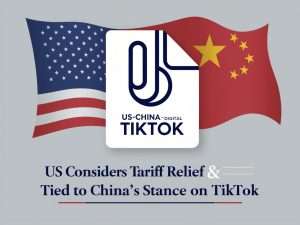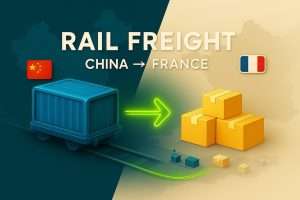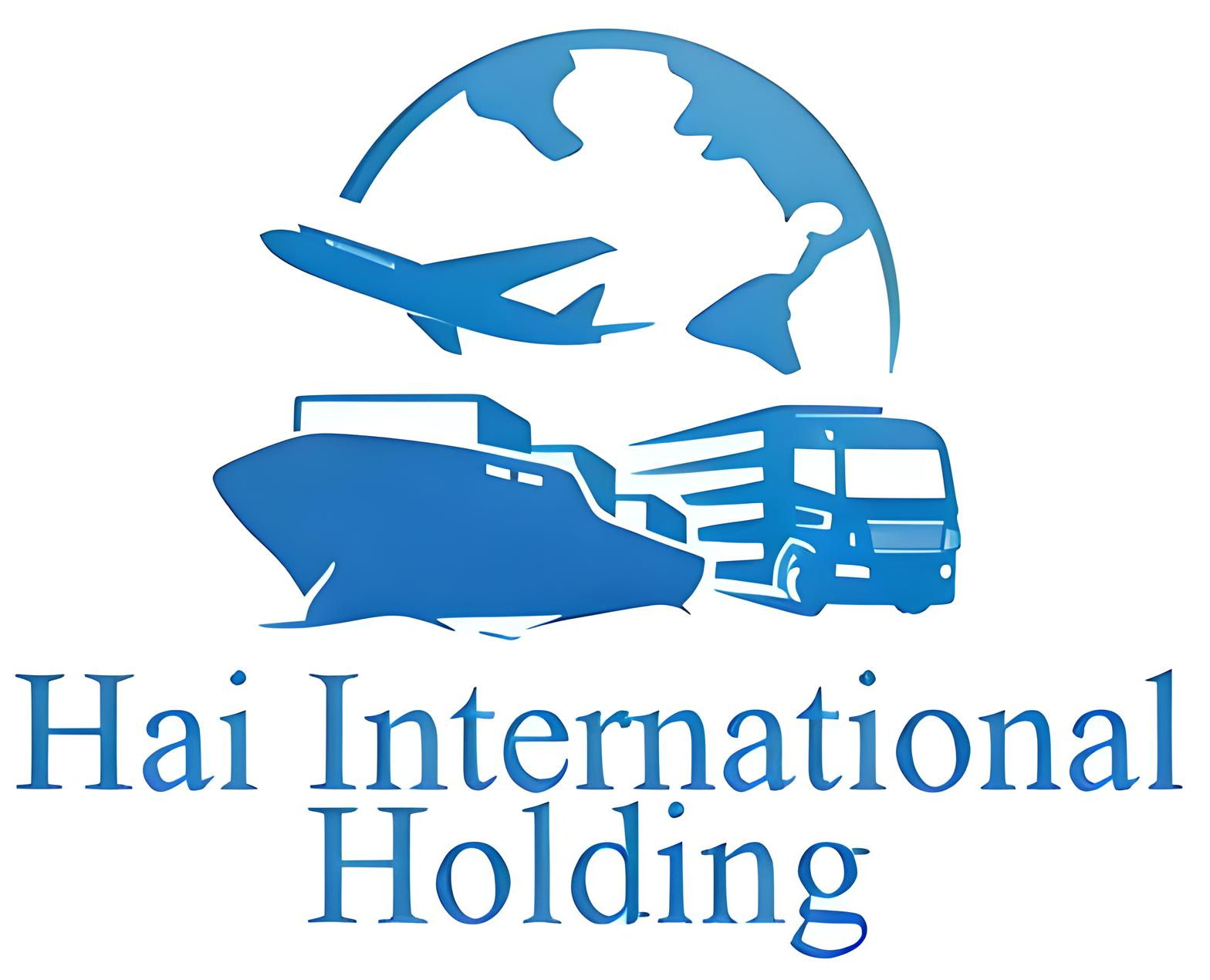Ever thought about starting an online business without holding inventory? That’s what dropshipping does. When a customer orders, you buy from a third-party supplier who ships directly to them, letting you focus on marketing and customer service. China is a key player in dropshipping due to its vast, affordable product range and advanced manufacturing. This makes it ideal for maximizing profits and diversifying offerings. Is dropshipping from China right for you? This article will evaluate the pros and cons to help you decide. From cost benefits to shipping challenges, we’ll cover all you need to succeed.
1. What is Dropshipping?
Ever wondered how you can sell products online without holding any stock? That’s the essence of dropshipping. This business model allows you to sell products directly to customers without ever having to handle the inventory. When a customer places an order on your online store, you purchase the product from a third-party supplier, who then ships it directly to the customer. This means you can focus on marketing and customer service while leaving the logistics to someone else.
Key Players in Dropshipping

In the dropshipping model, there are three key players:
| Key Player | Role | Responsibilities |
|---|---|---|
| Retailers | Run online stores | Marketing products, providing customer service |
| Suppliers | Manufacturers or wholesalers | Hold inventory, fulfill orders, ship products |
| Customers | End consumers | Purchase products, expect quick delivery and high quality |
- Retailers: These are the individuals or companies running the online stores. They are responsible for marketing the products and providing customer service.
- Suppliers: These are the manufacturers or wholesalers who hold the inventory. They fulfill orders on behalf of the retailers and ship products directly to customers.
- Customers: The end consumers who purchase products from the retailers’ online stores. They expect quick delivery and high-quality products.
2. Why Choose China for Dropshipping?
Why is China the go-to choice for dropshippers worldwide? The answer lies in China’s unique position as a global manufacturing hub. This role has evolved over decades, establishing the country as a leader in production and innovation.
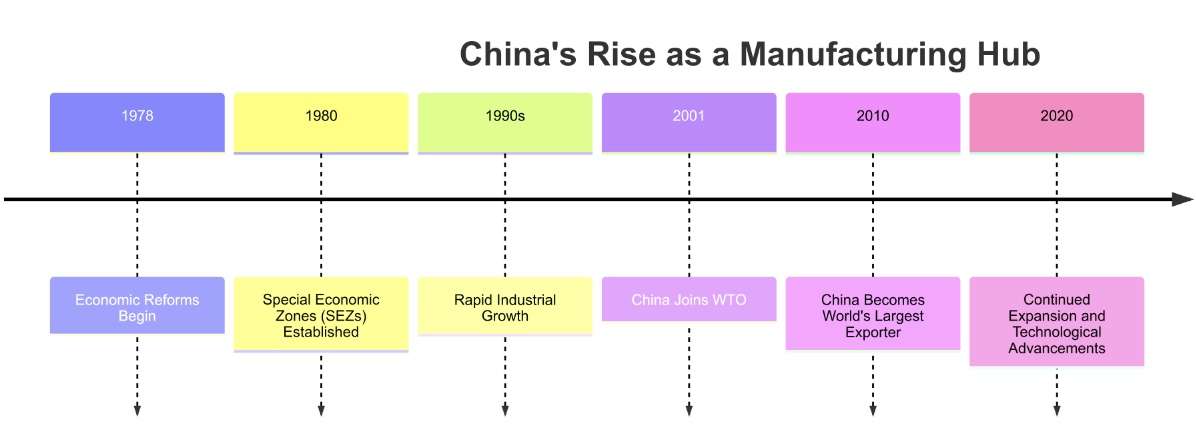
Historical Context: China as a Manufacturing Hub
China’s reputation as the “world’s factory” began in the late 20th century. Factors such as low labor costs, vast industrial infrastructure, and government incentives for manufacturing have solidified this status. By 2010, China had surpassed the United States as the largest manufacturing nation, producing a significant portion of the world’s goods. This history of mass production and economies of scale makes China a preferred source for dropshippers seeking competitive prices and diverse product offerings.
Current Trends: Popularity and Growth of Chinese Suppliers in Dropshipping
In recent years, China’s dominance in dropshipping has only grown. Platforms like Alibaba, AliExpress, and DHgate offer easy access to millions of products. These platforms cater to a global market, making it simple for dropshippers to find and source products. For example, in 2020, AliExpress reported over 150 million active buyers, indicating the extensive reach and popularity of Chinese suppliers. Advances in technology and logistics have further enhanced China’s appeal, with improvements in shipping times and product quality. This ensures that dropshippers can provide a wide variety of affordable and innovative products to their customers, maintaining a competitive edge in the market.
3. Pros of Dropshipping from China
Cost Benefits
Why is China a cost-effective choice for dropshippers? One major advantage is significantly lower manufacturing and product costs. For instance, the cost of manufacturing a smartphone in China can be up to 40% cheaper than in Western countries due to economies of scale and low labor costs. These savings allow dropshippers to enjoy higher profit margins and offer competitive prices.
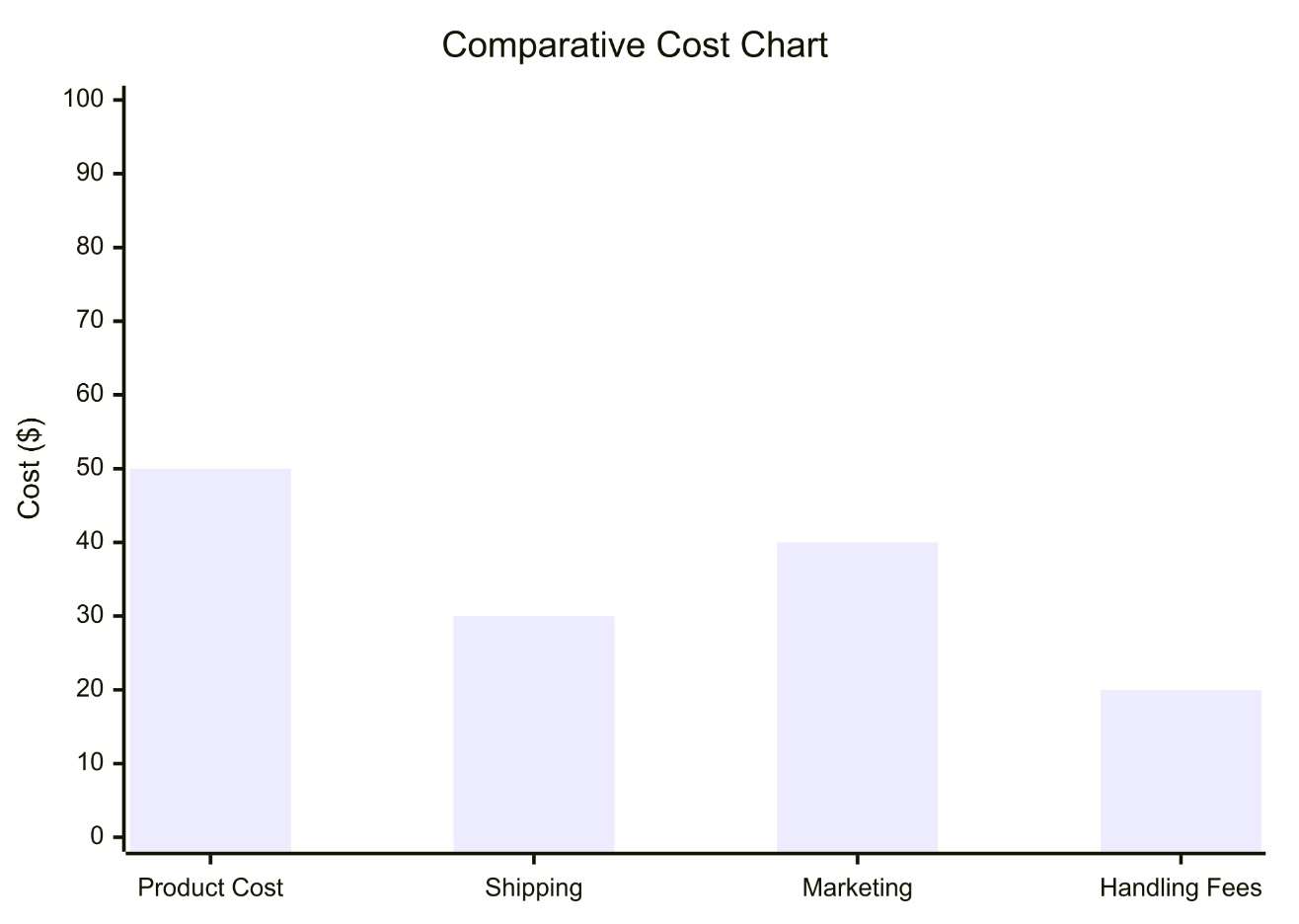
Product Variety
Looking for a wide range of products to offer? China provides an extensive range of products, from electronics to fashion. Platforms like AliExpress and Alibaba list over 100 million products across various categories. This vast selection ensures that dropshippers can always find new and trending items to attract customers, keeping their offerings fresh and appealing.
Scalability
How can you quickly grow your dropshipping business? The ability to quickly scale business operations is a significant advantage of sourcing from China. With large inventories readily available, you can easily increase your product offerings and handle more orders without the risk of running out of stock. For example, during the peak shopping season of Black Friday in 2020, many dropshippers were able to scale up their operations seamlessly due to the robust supply chain in China.
Technological Advancements
Want to stay ahead with the latest tech? China offers access to the latest manufacturing technologies and innovations in product design and production. For instance, the Shenzhen region, known as the “Silicon Valley of Hardware,” is home to numerous tech startups and manufacturers, providing dropshippers with cutting-edge products like smart home devices and wearable technology before they become mainstream.
Supplier Flexibility
Need flexibility in your supply chain? China provides a wide selection of suppliers, allowing you to switch suppliers with minimal disruption. This flexibility is beneficial in maintaining a steady supply of products and negotiating better terms. According to a survey by the China-Britain Business Council, over 60% of UK businesses sourcing from China reported high satisfaction with their ability to switch suppliers easily and maintain consistent product quality.
| Pros | Description | Example |
|---|---|---|
| Cost Benefits | Significantly lower manufacturing and product costs due to economies of scale and low labor | Manufacturing a smartphone in China can be up to 40% cheaper than in Western countries |
| Product Variety | Extensive range of products available on platforms like AliExpress and Alibaba | Over 100 million products listed across various categories |
| Scalability | Ability to quickly scale business operations with large inventories | Seamless scaling during peak seasons like Black Friday due to robust supply chains |
| Technological Advancements | Access to the latest manufacturing technologies and innovative products | Shenzhen region offers cutting-edge products like smart home devices and wearable technology |
| Supplier Flexibility | Wide selection of suppliers allows easy switching and consistent quality | Over 60% of UK businesses report high satisfaction with supplier flexibility and product consistency |
4. Cons of Dropshipping from China
Quality Control Issues
Worried about the quality of products from China? One of the main challenges of dropshipping from China is inconsistent product quality. Many dropshippers face difficulties in maintaining high-quality standards due to varying manufacturing practices among suppliers. According to a 2019 survey by eCommerceFuel, 23% of dropshippers reported significant quality control issues, resulting in customer complaints and higher return rates.
Shipping and Delivery Times
Concerned about long shipping times? Extended shipping times compared to local suppliers is a significant drawback. Products shipped from China can take 2-4 weeks to reach customers, impacting customer satisfaction and increasing return rates. A 2020 study by Statista found that 44% of U.S. online shoppers cited long delivery times as a primary reason for not purchasing from international sellers.

Communication Barriers
Finding it hard to communicate with suppliers? Language differences and time zone challenges can severely affect business transactions. Misunderstandings due to language barriers can lead to errors in orders, while time zone differences can cause delays in communication, slowing down problem resolution. A 2018 report by the International Journal of Business Communication indicated that 31% of dropshippers experienced communication difficulties with their Chinese suppliers, leading to operational inefficiencies.
Customs and Duties
Worried about customs delays and extra fees? Dealing with customs delays and additional fees can be complicated. International shipping regulations can vary, leading to unforeseen complications and costs. For instance, the World Trade Organization reported that 18% of international shipments face delays due to customs issues, which can add unexpected costs and slow down delivery times.
Supplier Reliability
Concerned about the reliability of your suppliers? The risk of encountering unreliable or fraudulent suppliers is a genuine concern. Verifying supplier legitimacy can be challenging, and working with unreliable suppliers can lead to delayed shipments and poor product quality. According to a 2021 survey by the China-Britain Business Council, 22% of businesses reported issues with supplier reliability, emphasizing the importance of thorough vetting and ongoing relationship management.
| Cons | Description | Example |
|---|---|---|
| Quality Control Issues | Inconsistent product quality and difficulties in maintaining standards | 23% of dropshippers report significant quality control issues (eCommerceFuel, 2019) |
| Shipping and Delivery Times | Extended shipping times impacting customer satisfaction and return rates | 44% of U.S. online shoppers cite long delivery times as a reason for not purchasing internationally (Statista, 2020) |
| Communication Barriers | Language differences and time zone challenges affecting business transactions | 31% of dropshippers experience communication difficulties with Chinese suppliers (International Journal of Business Communication, 2018) |
| Customs and Duties | Potential for customs delays and additional fees | 18% of international shipments face delays due to customs issues (World Trade Organization) |
| Supplier Reliability | Risk of encountering unreliable or fraudulent suppliers and challenges in verifying legitimacy | 22% of businesses report issues with supplier reliability (China-Britain Business Council, 2021) |
5. Detailed Analysis of Benefits and Risks
Cost Analysis
How do Chinese suppliers stack up against others in terms of cost?
- Lower Manufacturing Costs: Chinese suppliers offer significantly lower prices due to economies of scale and lower labor costs. For example, producing a T-shirt in China costs around $1.50 compared to $3.00 in the US (International Trade Administration).
- Hidden Costs: Be aware of additional expenses such as shipping fees, customs duties, and tariffs.
- Shipping Fees: Shipping a 1kg package from China to the US can cost $10-$20, depending on the method.
- Customs Duties: Duties can add an extra 5-20% to the product cost, depending on the category.
- True Savings: Conduct a comprehensive cost analysis to understand if the lower product cost outweighs additional charges.
Risk Assessment
What are the major risks of dropshipping from China, and how can you mitigate them?
- Inconsistent Product Quality:
- Survey Data: 27% of dropshippers experienced product quality issues (SaleHoo).
- Mitigation: Use quality control services like QIMA and SGS, which offer inspections starting at $300.
- Extended Shipping Times:
- Delivery Time: Standard shipping times to the US range from 15 to 45 days (AliExpress).
- Mitigation: Use ePacket shipping to reduce delivery times to 7-20 days and set clear expectations with customers.
- Communication Barriers:
- Challenges: Language differences and time zone gaps can affect transactions.
- Mitigation: Hire bilingual staff or use translation services. 31% of dropshippers found that hiring bilingual agents improved communication (International Journal of Business Communication).
- Customs Delays and Fees:
- Regulations: Understand customs regulations and potential duties. The US imposes an average duty rate of 2% on imports.
- Mitigation: Work with experienced freight forwarders like Flexport, which offer customs clearance support.
- Supplier Reliability:
- Risk: Encountering unreliable or fraudulent suppliers.
- Mitigation: Use verified suppliers on platforms like Alibaba. The Gold Supplier program indicates verified suppliers. Building strong relationships with a few reliable suppliers reduces risks. 22% of businesses reported issues with supplier reliability (China-Britain Business Council).
6. Success Factors for Dropshipping from China
Choosing Reliable Suppliers
How do you find trustworthy suppliers in China? Identifying and vetting reliable suppliers is crucial for your dropshipping success. Start by using verified platforms like Alibaba, which offers a Gold Supplier program indicating thorough vetting. According to a 2021 survey by Alibaba, Gold Suppliers have a 98% satisfaction rate. Check for supplier certifications like ISO9001, which ensures quality management standards. Request product samples to assess quality firsthand. Establishing strong supplier relationships is essential. Regular communication and long-term partnerships can lead to better terms and priority service.
Effective Communication
Struggling with communication barriers? Overcoming language barriers is vital. Use tools like Google Translate and hire bilingual staff to facilitate clear communication. According to the International Journal of Business Communication, 31% of dropshippers found that hiring bilingual agents significantly improved their communication with Chinese suppliers. Schedule regular meetings considering time zone differences to maintain consistent contact. Clear, detailed instructions and confirming order specifics in writing can prevent misunderstandings.
Shipping Solutions
Worried about shipping times and costs? Partnering with reliable logistics providers can optimize your shipping process. Use services like ePacket, which offer faster delivery times at reasonable costs. For instance, ePacket can reduce delivery times to 7-20 days compared to 15-45 days with standard shipping. Consider third-party logistics providers (3PLs) to handle warehousing and shipping, ensuring efficient delivery. According to a 2020 survey by Flexport, businesses using 3PLs reported a 20% increase in shipping efficiency. Tracking shipments and informing customers of their status can enhance customer satisfaction.
Quality Control Measures
How do you ensure product quality? Implementing effective quality assurance processes is essential. Use third-party inspection services like QIMA and SGS for product inspections before shipment. According to QIMA, their inspections can reduce defect rates by up to 50%. Regularly test products to maintain high standards and minimize returns. Clear quality requirements in purchase agreements can also help enforce standards. This proactive approach can prevent quality issues and maintain customer trust.
7. Case Studies and Real-Life Examples
Examples of Successful Dropshipping Businesses Utilizing Chinese Suppliers
 Curious about real-world success in dropshipping from China? Many businesses have thrived using Chinese suppliers. One notable example is ColourPop Cosmetics. They leveraged Chinese suppliers to offer a wide range of affordable, high-quality cosmetics. By focusing on rapid product development and cost-effective production, ColourPop quickly became a favorite among beauty enthusiasts. In 2020, they reported revenues of over $100 million, demonstrating the potential for success with strategic supplier partnerships.
Curious about real-world success in dropshipping from China? Many businesses have thrived using Chinese suppliers. One notable example is ColourPop Cosmetics. They leveraged Chinese suppliers to offer a wide range of affordable, high-quality cosmetics. By focusing on rapid product development and cost-effective production, ColourPop quickly became a favorite among beauty enthusiasts. In 2020, they reported revenues of over $100 million, demonstrating the potential for success with strategic supplier partnerships.
 Another success story is Gymshark, a fitness apparel brand. Gymshark utilized Chinese suppliers to produce high-quality, fashionable activewear at competitive prices. By maintaining strong relationships with suppliers and investing in quality control, Gymshark ensured consistent product standards. Their commitment to effective communication and reliable logistics helped them grow into a global brand, reaching a valuation of over $1 billion in 2020.
Another success story is Gymshark, a fitness apparel brand. Gymshark utilized Chinese suppliers to produce high-quality, fashionable activewear at competitive prices. By maintaining strong relationships with suppliers and investing in quality control, Gymshark ensured consistent product standards. Their commitment to effective communication and reliable logistics helped them grow into a global brand, reaching a valuation of over $1 billion in 2020.
Lessons Learned from Businesses That Faced Challenges
What can we learn from businesses that encountered difficulties? Not all dropshipping ventures go smoothly. Take the example of DODOcase, a company that initially thrived but faced significant challenges with supplier reliability. They experienced issues with inconsistent product quality and delayed shipments, leading to customer dissatisfaction. DODOcase learned the hard way the importance of thorough supplier vetting and regular quality inspections.
Another example is Zappos, which faced hurdles with extended shipping times from Chinese suppliers. Initially, the long delivery times led to high customer churn rates. Zappos mitigated this by partnering with 3PLs and improving their logistics network. This adjustment reduced delivery times and significantly enhanced customer satisfaction.
These case studies highlight the critical importance of choosing reliable suppliers, maintaining effective communication, and optimizing logistics to overcome common dropshipping challenges. By learning from both successes and setbacks, aspiring dropshippers can better navigate the complexities of using Chinese suppliers.
Final Thoughts on Dropshipping from China
Summary of the Pros and Cons of Dropshipping from China
Is dropshipping from China the right choice for your business? Let’s recap the pros and cons to help you decide. On the plus side, China offers significantly lower manufacturing costs, a vast product variety, and the ability to scale quickly due to large inventories. Additionally, technological advancements and supplier flexibility provide a competitive edge.
However, there are drawbacks to consider. Quality control issues, extended shipping times, and communication barriers can pose significant challenges. Additionally, customs delays and the risk of unreliable suppliers must be factored into your decision-making process.
Final Verdict: Is Dropshipping from China Worth It?
So, is dropshipping from China worth it? The answer depends on your ability to manage risks and leverage benefits. If you can establish strong supplier relationships, implement effective quality control measures, and optimize your shipping solutions, dropshipping from China can be highly profitable. The cost savings and product diversity can give your business a significant boost.
Recommendations for Potential Dropshippers Considering Chinese Suppliers
Thinking about starting your dropshipping journey with Chinese suppliers? Here are some recommendations:
- Choose Reliable Suppliers: Use verified platforms like Alibaba and request product samples. Establish long-term relationships to ensure consistent quality.
- Effective Communication: Hire bilingual staff or use translation tools to overcome language barriers. Schedule regular meetings considering time zone differences.
- Quality Control: Implement third-party inspections and set clear quality standards. Regularly test products to maintain high standards.
- Optimize Shipping: Partner with reliable logistics providers and consider using services like ePacket for faster delivery times.
- Understand Customs and Duties: Familiarize yourself with international shipping regulations and potential customs fees to avoid unexpected costs.
By carefully considering these factors, you can maximize the benefits of dropshipping from China while minimizing the risks.
FAQs About Dropshipping from China
Is it hard to find reliable suppliers in China?
Finding reliable suppliers can be challenging, but using verified platforms like Alibaba and looking for Gold Supplier status can help. Requesting product samples and reading customer reviews also aid in identifying trustworthy suppliers.
How do I handle quality control issues?
Quality control is crucial. Implement third-party inspections through services like QIMA and SGS. Set clear quality standards in your purchase agreements and conduct regular product testing to maintain high standards.
What are the average shipping times from China?
Standard shipping times can range from 15 to 45 days. To reduce this, use ePacket shipping which typically takes 7-20 days. Always set clear expectations with your customers regarding delivery times.
How can I overcome communication barriers with Chinese suppliers?
Overcoming language barriers can be managed by hiring bilingual staff or using translation tools like Google Translate. Schedule regular meetings considering time zone differences and ensure all order details are clearly communicated in writing. Overcoming language barriers can be managed by hiring bilingual staff or using translation tools like Google Translate. Schedule regular meetings considering time zone differences and ensure all order details are clearly communicated in writing.
What are the customs and duty implications?
Understand that customs duties and delays can vary. Familiarize yourself with the customs regulations of the countries you are shipping to. Customs duties can add 5-20% to the cost depending on the product category. Working with experienced freight forwarders can help navigate these complexities.
Additional Resources
Links to Tools, Platforms, and Resources for Dropshipping
Alibaba: Alibaba – A leading platform to find verified suppliers and a wide range of products.
AliExpress: AliExpress – Another popular platform for sourcing products directly from China.
DHgate: DHgate – A marketplace connecting international buyers with Chinese wholesalers.
QIMA: QIMA – A global provider of quality control and compliance services.
Flexport: Flexport – A full-service freight forwarder that simplifies international shipping.
Google Translate: Google Translate – A tool for overcoming language barriers in communication with suppliers.
Shopify: Shopify – A leading e-commerce platform that integrates easily with dropshipping services.
